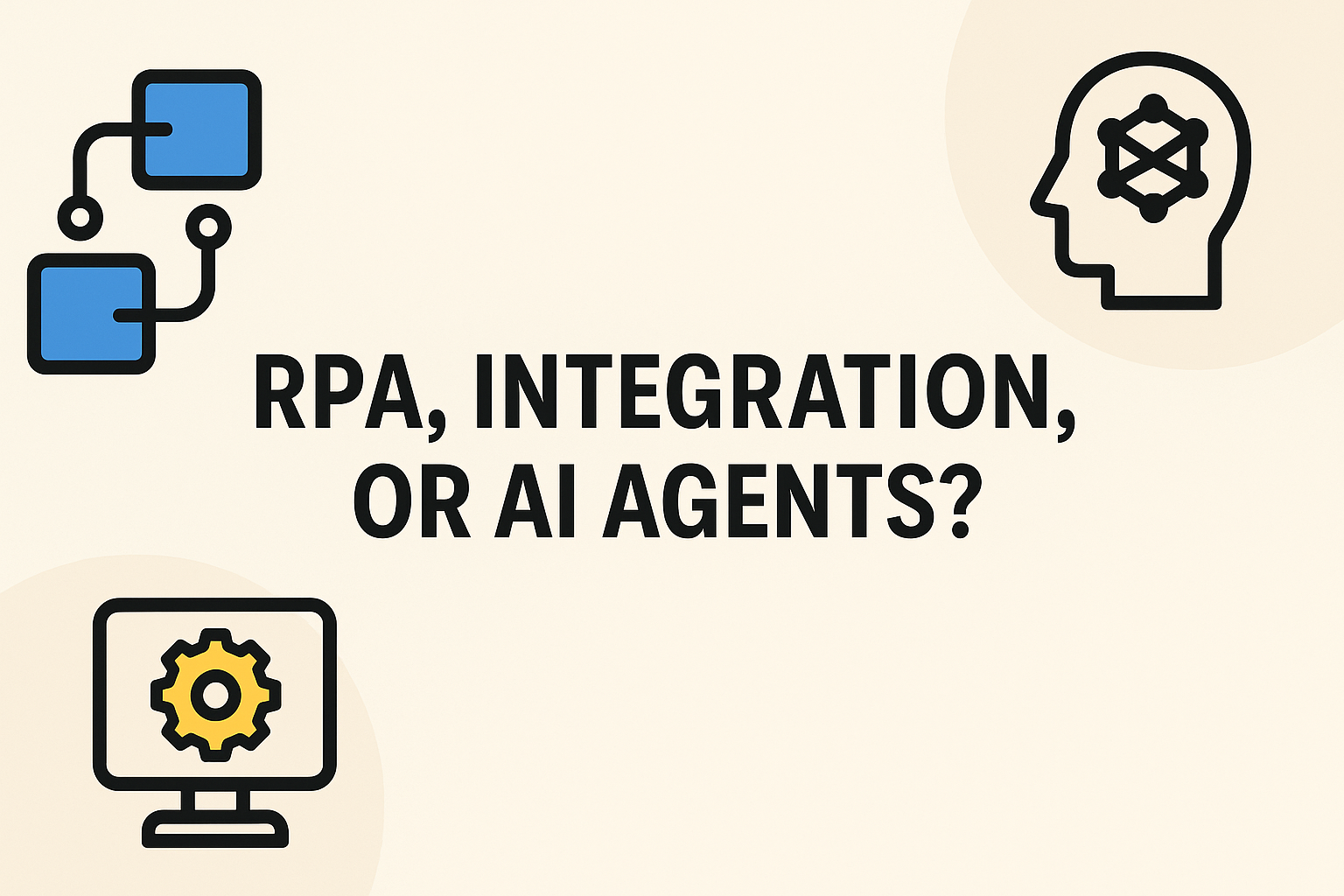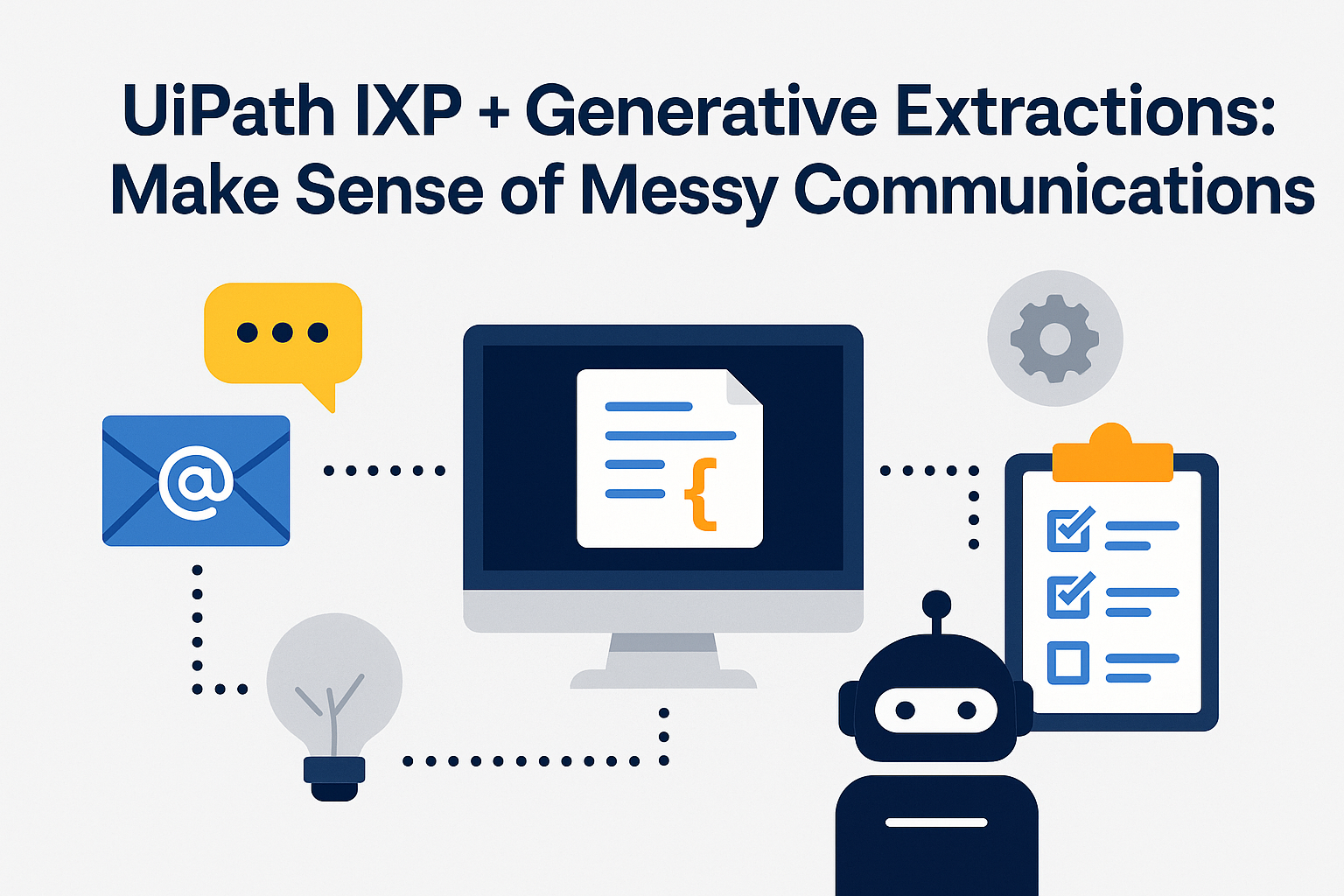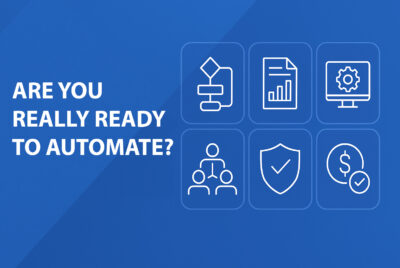Promise: No vendor religion. You’ll get a quick decision matrix and two micro‑cases to sanity‑check your instincts.
Three approaches, one goal
We automate to remove toil and create leverage.
Integration wins where systems expose stable APIs or events.
RPA wins where only the UI is available or change is slow.
AI agents help where rules explode and context matters (classification, routing, understanding).
Decision matrix (use this per project to determine which tool works the best for particular project)
| Criteria | Integration | RPA | AI Agent |
|---|---|---|---|
| Source of truth has API? | ⭐⭐⭐⭐ | ⭐⭐ | ⭐⭐ |
| UI volatility | ⭐⭐⭐ (tolerant) | ⭐ (fragile) | ⭐⭐⭐ |
| Judgement required | ⭐ | ⭐⭐ | ⭐⭐⭐⭐ |
| Compliance traceability | ⭐⭐⭐⭐ | ⭐⭐⭐ | ⭐⭐ |
| Time‑to‑first‑value | ⭐⭐ | ⭐⭐⭐⭐ | ⭐⭐⭐ |
| Ops ownership post‑go‑live | ⭐⭐⭐ | ⭐⭐ | ⭐⭐⭐ |
Two micro‑cases
Case A: Invoice to ERP — ERP has APIs; document layout varies.
Use integration for posting + AI for document capture. Add tiny RPA shim only if some vendor portals are UI‑only.
Case B: HR onboarding — Multiple legacy apps; no clean APIs; standardized forms.
Start with RPA to cover UI work; carve out any API‑friendly parts later into integration.
Proof fast, scale slower
- [ ] Timebox a micro‑PoC (≤10 days) on the riskiest assumption.
- [ ] Instrument basic logs so you can compare approaches objectively.
- [ ] Kill fast if fragility shows; don’t double‑down on sunk cost.
What to avoid
- Treating AI as a silver bullet for broken processes.
- Building RPA where a supported API exists.
- Over‑engineering an integration for a niche UI‑only corner.
👉 Want the full templates, scorecards, and step‑by‑step playbooks? They’re in my upcoming book Digital Automation Guide and the companion course. Join the waitlist.




